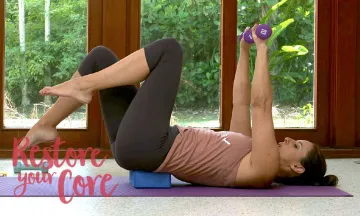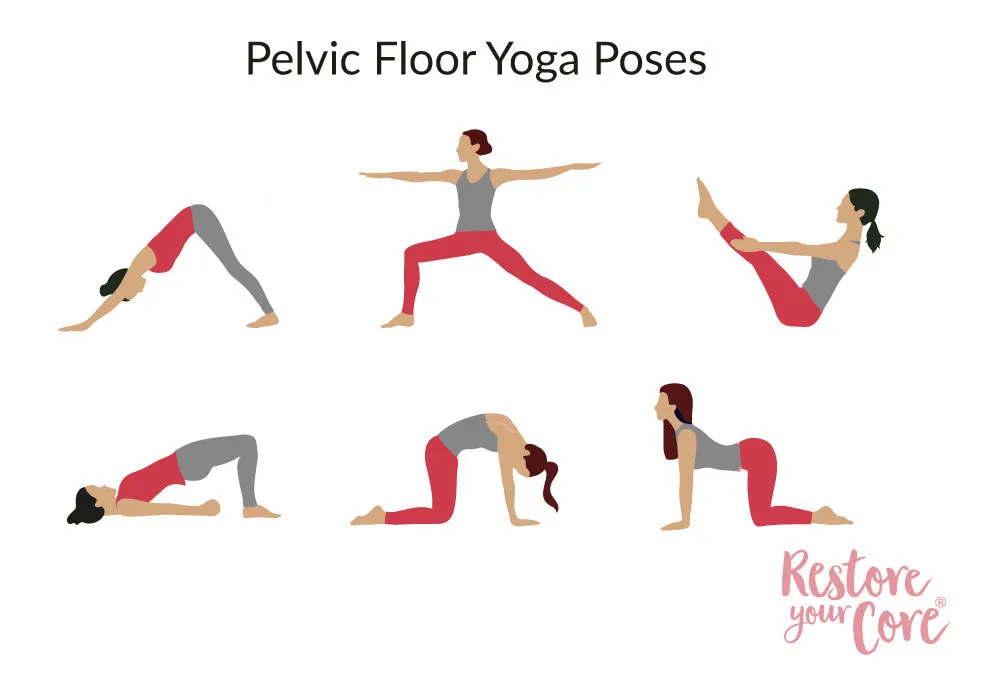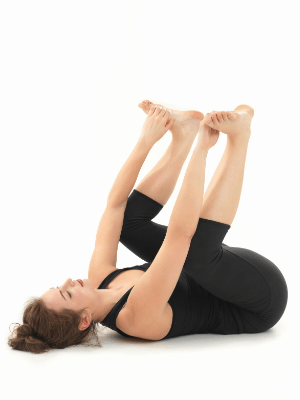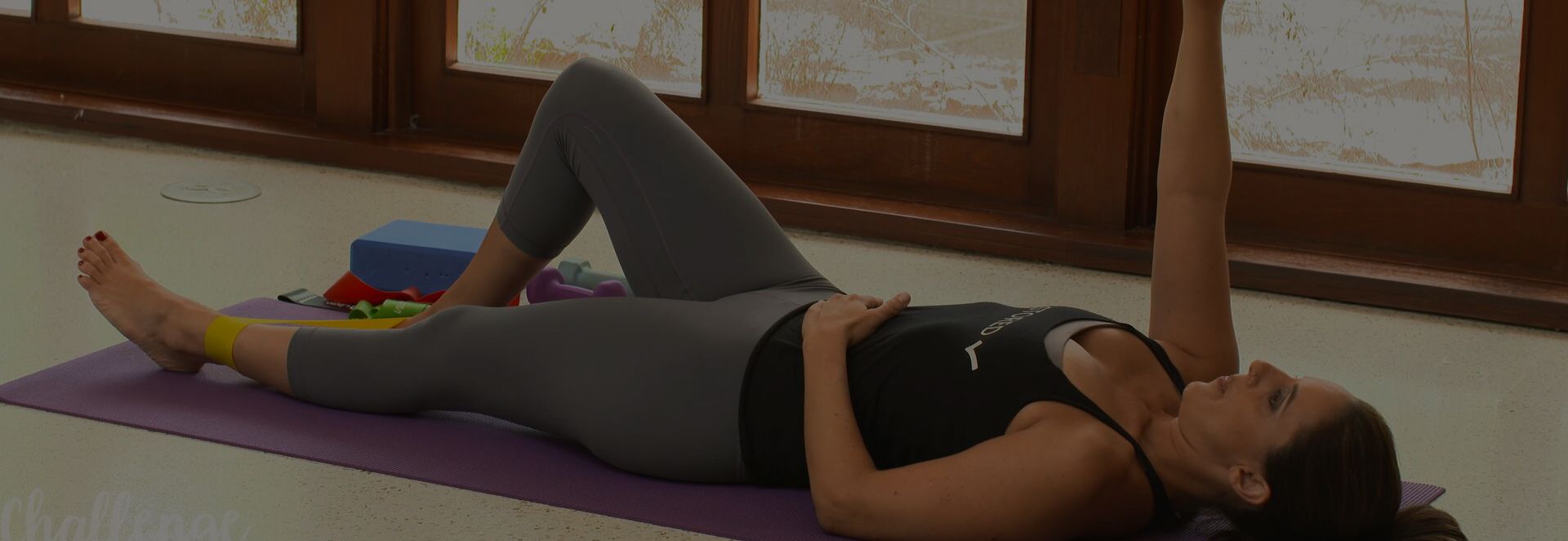Pelvic Floor Stretches | 5 Quick Ways To Relax Your Pelvis
4 Min Read
Persistent pelvic floor pain can be difficult to endure.
Pelvic floor dysfunction issues can range between hyperactivity to pelvic organ prolapse. The result of both cases can lead to painful and embarrassing symptoms for both men and women. In this article, I will address helpful exercises and stretches that help free you of painful symptoms and aid in restoring pelvic floor and core function. To be clear, stretching is just one type of input into the pelvic floor system and is not the only thing you should do for a tight / tense pelvic floor. Downtraining your pelvic floor will require a variety of loads and inputs, stretching is one important one.
Table of Contents
Symptoms of Tight Pelvic Floor Muscles
When addressing tight pelvic floor muscles or pelvic floor pain, there are a few symptoms that are common between men and women suffering from POP or a weakened pelvic floor. These can include symptoms such as:
- Rectal pain
- Vaginal pain
- Penile pain
- Testicular pain
- Labia pain
- Pelvic pain
- Lower back pain
- Pain during intercourse
- Difficulty with bowel movements
- Painful orgasms
- Abdominal pain
- Pain while urinating
- Incontinence
Dealing with these symptoms can be embarrassing and prolonged suffering can result in a host of other issues. The goal with movement programs like Restore Your Core, is to help you overcome these painful symptoms while encouraging proper core and pelvic floor engagement on a daily basis. Below are a few of the techniques, exercises, and stretches I teach my clients in my program.

Are you looking for safe and restorative exercises to heal your pelvic floor symptoms?
Learn more about the RYC program
Are you looking for safe and restorative exercises to heal your pelvic floor symptoms?
Learn more about the RYC program
How to Stretch Pelvic Muscles
There are several ways you can properly stretch and engage your pelvic floor in order to reduce pelvic floor tension . One of the most beneficial and important techniques that I teach my clients is 3-D breathing – a pattern of breathing that uses the rib cage expansion rather than belly expansion for an effective and efficient strategy.
One of the key elements in resolving pelvic floor dysfunction and POP is breathing mechanics. In Restore Your Core, I spend a significant amount of time teaching my clients proper breathing mechanics. Often people don’t realize the way they breathe impacts the integrity of their core and pelvic floor. Yet, most of us do not even realize easily we can fall into improper breathing patterns.
Most people are belly breathers. This means that while inhaling, they’re extending their abdomen – focusing the tension in their belly. An Illustration of this would look like filling an oval-shaped balloon with water and squeezing the top creating a bulge. The exact same thing happens when you belly breathe. Bulging your gut strains your core and pelvic floor by increasing intra-abdominal pressure. This tends to cause muscle and organ damage in those regions. Our pelvic floor is not designed to handle a lot of consistent pressure and stress.
I spend a lot of my time with clients training them to 3-D breathe. 3-D breathing trains you to engage your diaphragm and rib cage while breathing. This means that instead of your belly extending as you inhale, your rib cage expands. Breathing in this manner reduces pressure in your core and pelvic region. Additionally, this technique encourages proper core response and engagement in your daily activities. Now that you understand proper breathing mechanics, it is time to learn how to properly stretch and exercise your core and pelvic floor.

Stretches for the Pelvic Floor
Supine Pelvic Floor Stretch:
Lying on your back, keep your knees bent and bring them toward your chest. Slowly extend your knees to the side to stretch the inner groin. Relax your pelvic floor and butt. Remain in this position for 5 to 10 breaths and relax.
Supported Slight Backbend Pelvic Stretch:
This is a fantastic pelvic stretcher. Using a pillow or bolster of some kind, gently lower your back to rest on top of the pillow. Once in position, slowly bring your feet together so the soles of your feet are touching. Keep your knees bent, but gently allow them to open sideways. If you feel any discomfort at all in your back or inner thighs, you can use pillows for further support or get rid of the bolster. Relax after 30 seconds or more (roughly 15 to 20 breaths)
Supported Pelvic Squat:
This stretch is an incredible hip and pelvis stretch. Grab a low stool or a stack of books and with your feet spread wide and toes pointed out sideways, gradually extend your buttocks and lower yourself to the blocks. If you are struggling to balance yourself, it may be helpful to use a wall for back support. It is important that if you experience any discomfort during these stretches that you reposition yourself until you can firmly plant your feet and bend without pain. Stay in a squatted position for close to 30 seconds (5-10 deep breaths), stand back up, relax, and repeat several times. Please note, that for some people with prolapse – a deep squat can really irritate and aggravate things due to bearing down, so be sure to only do this one if you feel comfortable that you are not bearing down in a low squat.
Yoga for Pelvic Floor Muscle Relaxation
You don’t have to live in
fear,pain or discomfort
Get back the confidence + lifestyle you love

You don’t have to live in
fear,pain or discomfort
Get back the confidence + lifestyle you love
Legs up the wall:
This exercise offers a lot of people relief from their symptoms and it is a great way to downtrain the pelvic floor. I always teach this with a block / pillows / blankets under the hips for elevation. The elevation is pretty key so be sure to get your hips on something. Elevate your hips and simply bring your legs up a wall. Move closer or further away from the wall depending on your body and comfort. Stay for 3-4 relaxing breaths and then you have a few options. One is to bend your knees and have the soles of your feet touching while still leaning legs against the wall. Adjust your body to make this more comfortable. No stress or tension in your hips. The other is to simply bend your knees and place the soles of your feet on the floor and relax your pelvis and pelvic floor and finally, option #3 is to open your legs wide and keep them against the wall while straddled. Find the position that best allows you to relax and release. Hold for 5-8 breaths.
Happy Baby Pose:

Lie on your back and bend your knees bringing them close to your chest. Grasp the soles of your feet with your arms inside your knees. Open your knees wide carefully, keeping your feet together, and making sure you’re breathing deeply. While in this position, press the soles of your feet into your palms. Relax and repeat 3-4 times. You can also do this with pillows under your hips if you find that you are fighting tight hips here.
Child Pose:
Begin this pose by resting on your hands and knees. Extend your arms slightly in front of you while relaxing your lower body and butt down toward your heels. Gradually lengthen the distance between your knees, but keep your feet together. Hold this position for 30 seconds and breathe restfully.



